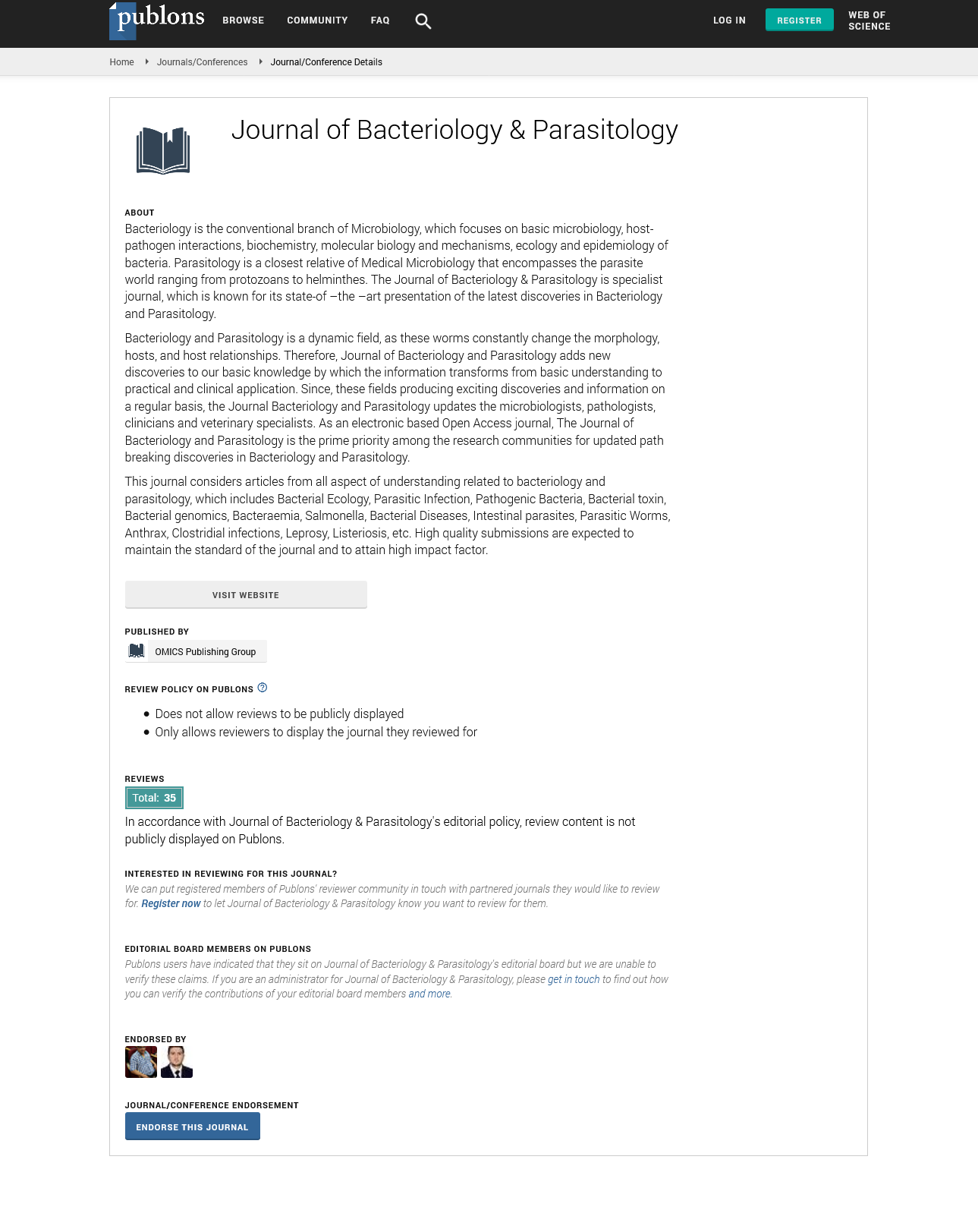Indexed In
- Open J Gate
- Genamics JournalSeek
- Academic Keys
- JournalTOCs
- ResearchBible
- Ulrich's Periodicals Directory
- Access to Global Online Research in Agriculture (AGORA)
- Electronic Journals Library
- RefSeek
- Hamdard University
- EBSCO A-Z
- OCLC- WorldCat
- SWB online catalog
- Virtual Library of Biology (vifabio)
- Publons
- MIAR
- Geneva Foundation for Medical Education and Research
- Euro Pub
- Google Scholar
Useful Links
Share This Page
Journal Flyer

Open Access Journals
- Agri and Aquaculture
- Biochemistry
- Bioinformatics & Systems Biology
- Business & Management
- Chemistry
- Clinical Sciences
- Engineering
- Food & Nutrition
- General Science
- Genetics & Molecular Biology
- Immunology & Microbiology
- Medical Sciences
- Neuroscience & Psychology
- Nursing & Health Care
- Pharmaceutical Sciences
Epidemiology, sero-diagnosis and therapy of Leishmaniasis in dogs and humans
5th International Conference on PARASITOLOGY & MICROBIOLOGY
July 12-13, 2018 Paris, France
Azhar Maqbool, Haroon Zamir Durrani and Abdul Manan
The University of Lahore, Pakistan
Livestock Department, Punjab, Pakistan
Posters & Accepted Abstracts: J Bacteriol Parasitol
Abstract:
The study was conducted in 28 cities which were located in the heart of the areas of endemicity of Leishmaniasis in Pakistan. Only cutaneous form of disease was found and no case of visceral form was seen. During this study a total of 33,600 human blood and lesion smear samples were collected and 12,428 samples (36.98%) were found positive for cutaneous Leishmaniasis, similarly a total of 16,800 dog blood and lesion smear samples were collected and 5,340 samples (31.78%) were found positive for cutaneous Leishmaniasis on microscopic examination by demonstration of Leishman-Donovan bodies. High percentages of cases in humans and dogs suggest that these areas are the established areas of cutaneous Leishmaniasis in Pakistan. It was found that sand-flies belonging to genus Phlebotomus were the vectors for the spread of infection in Pakistan. A total of 20,689 sand-flies were caught and nine species were identified during the study on the basis of morphology (sand-flies identified were 30% Phlebotomus papatasi (6,207); 17% P. major (3,518); 15% each P.argentipes and P. orientalis (3,104 each); 8% P. alexandri (1,655); 5% P. sergenti (1,034); 4% P. longipes (827); 3% each P. bergeroti and P. pedifer (620 each). PCR analysis of eight human and three dog samples was done; samples were collected from the study area. The PCR was so sensitive that it detected traces of DNA of Leishmania parasites. Therapeutic trials were conducted on hamsters with experimentally produced cutaneous lesions to evaluate the efficacy of topical application of pentavalent antimony compounds (sodium stibogluconate 10% and meglumine antimoniate 10%), imidazole compounds (clotrimazole 10% cream and Miconazole 10% cream) and indigenous herbal remedies (garlic extract 10%, onion extract 10% and harmala extract 10%). The antimony compounds were found to be very effective in healing the lesions in 7 and 12 days. The imidazole compounds healed the lesions in 21 and 36 days and herbal remedies healed the lesions in 50, 60 and 72 days respectively. All the treated wounds healed, leaving a minimal scar.

